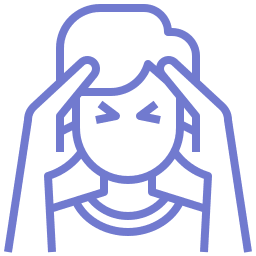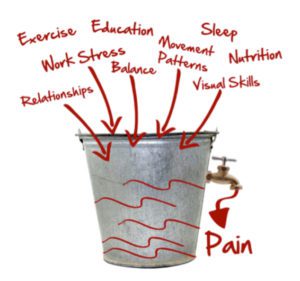Anxiety

Anxiety is a normal emotion that we all experience at one point or another. However, for some people, anxiety can become more than just an occasional feeling. It can become debilitating and have a significant impact on their quality of life.
When you suffer from anxiety, your breathing can become faster, more shallow and you often hold your breath. This way of breathing tells your brain you’re under threat – you’re in danger as if you are being chased by a tiger. Your sympathetic (fight/flight/freeze) nervous system is working overtime. Your breath alone can make you FEEL more anxious even if you’re not under high stress and can lead to symptoms such as sleep disturbances, low energy levels, brain fog, headaches and high blood pressure, among many others.
Anxiety is often rooted in a dysregulation of the autonomic nervous system, caused when the body’s fight-or-flight reactivity (sympathetic) is overactivated and the body’s rest-and-digest response (parasympathetic) becomes suppressed. With Breathwork, an accessible and powerful self-healing method, one can learn how to activate each of these systems consciously and intentionally. Over time and with practice, one can restore balance to their nervous system, ultimately reducing their overall anxiety levels.
Or Brains Responds to Percieived Threaths by Signaling our Body to be on
Hight Alert for Danger which can Create Feelings of Anxiety.

THE CONCEPT OF THREAT AND ITS ROLE IN ANXIETY
Our brain is constantly scanning the environment for threats, and when it perceives them, it sends signals throughout our body that something isn’t right. In a state of perceiving threat, our brains react by making us anxious and alerting our body to fear.
Anxiety can manifest physically through increased heart rate and tightness in the chest or stomach. It can also affect our mental states, causing us to respond with anger, avoidance, or hypervigilance.
When we are in a state of fear due to perceived threat, our body is flooded with hormones which prompt us to freeze, fight, or flee. When we are constantly bombarded with threats, our fight-or-flight response becomes chronic and can lead to fatigue, digestive issues, high blood pressure, and anxiety.
When it comes to understanding how our brain processes and responds to threats, the concept of a threat bucket can be helpful. Our brain constantly receives input and data from our environment and is continuously assessing whether or not it poses a level of threat. When a stressor is perceived as unsafe, our brain stores this experience in the threat bucket.
Over time, as threats accumulate, we become increasingly sensitive to potential dangers and more easily overwhelmed with stress. This phenomenon can lead to higher levels of anxiety, as even minor challenges can quickly push us out of our comfort zone. Those with an already established history of experiencing frequent threats or trauma may find themselves feeling constantly on edge or hypervigilant.
Targeting specific areas of the brain through breathing exercises can reduce the brain’s interpretation of threat creating a calmer state. For example, one can utilize specific breathing protocols to activate the area of the brainstem known as the pons which inhibits sympathetic activity (the fight, flight. freeze response) and minimize symptoms associated with anxiety disorders. Studies have shown that influencing the pons through diaphragmatic breathing can reduce panic attacks as well as hyperventilation.
We now have science that shows us how our breathing impacts our brains and our entire body. Making slight shifts to how you breathe can make a huge difference in how you feel. With Breathwork, an accessible and powerful self-healing method, one that can restore balance to their nervous system. This can ultimately reduce anxiety levels long term.
We aim to enlighten and guide our community in harnessing the power of their own healing through breathing.
PLEASE REVIEW OUR MEDICAL DISCLAIMER HERE
